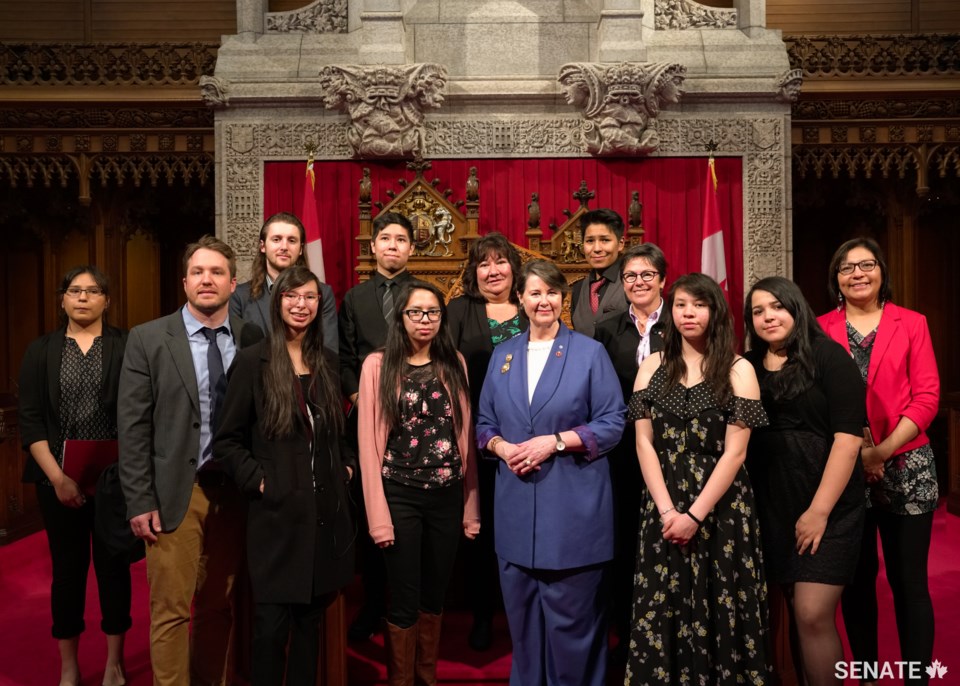THUNDER BAY – A new high school and living centre in Thunder Bay for students from remote First Nations communities could be a step closer after a group of current students and staff lobbied federal politicians in the nation’s capital.
Seven Dennis Franklin Cromarty High School students, joined by teachers and administrators, travelled to Ottawa last week where they met with a pair of senators to advocate for new buildings.
Sean Spenrath, the school’s First Nations student success program coordinator, said he feels like the trip got the ball rolling.
“I think it’s important because the kids need to have a choice of where they want to go to school. It’s one thing to say they want to build 24 high schools in 24 isolated First Nations communities but the reality is that’s way too expensive and it’s probably not feasible. You’re going to have maybe 10 kids attending the high schools in each of the communities,” Spenrath said on Tuesday.
“Why wouldn’t you want to build the central location? It’s both cheaper and more affordable.”
The contingent met with Sen. Kim Pate, who visited the school earlier this year. They also met with local MPs Patty Hajdu and Don Rusnak and received a commitment that they would forward a letter outlining their requests to Prime Minister Justin Trudeau.
The school’s students travel away from their communities to attend school and many are housed in boarding homes, which are spread out across the city.
Alaina Sakchekapo, a 17-year-old Grade 12 student, hasn’t experienced stable accommodations.
“I didn’t have a (living centre) and I don’t want my siblings going through the same thing I’ve had to do. I’ve moved to 13 different boarding houses while I was here during my four years of high school,” she said.
“It’s really hard. There’s the studying issue and then you have to move and pack up all your things to a home that’s most likely temporary.”
Living apart from friends can make it challenging to make plans outside of school hours, Sakchekapo added.
“It’s pretty hard because you have to put a main point where you guys are going to meet up and if someone misses their bus you’re going to be waiting for a whole other hour for them again,” she said.
Spenrath said it’s not uncommon to hear stories of students having to take up to four different buses to reach different destinations.
“That’s the reality of what our kids go through just to hang out with each other at the end of the day,” Spenrath said. “That’s why we’ll see so many kids after school here until 8 p.m. every night hanging out. This is their home.”
Spenrath said the Northern Nishnawbe Education Council, which oversees the school, has been working with a contractor on preliminary conceptual design for a new school building, which could be located just outside the city but still in close proximity to access services such as transit.
The current high school opened in 2000 and is located in the 55-year-old former Northwood High School that closed in 1996.
“The building here is pretty old. The ceiling tiles are literally falling apart. There are leaks in our roof,” Sakchekapo said. “There’s asbestos in our building. I’m pretty sure every other school has gotten theirs cleared but we have yet to get ours and we’ve known about that for 10 years.”
The selection of seven students represented the number of youth who died in Thunder Bay between 2000 and 2011 while attending high school away from their home communities.
Kaiden Angeconeb, a 15-year-old Grade 10 student, acknowledged he will most likely have graduated before a new school or living centre come to fruition but said it’s still important to push government.
“It’s for the future generations,” he said. “I want to make sure they’re safe, they’re protected and they have a fun time. That’s what everybody deserves in high school.”
Spenrath said the school finished the year with 86 students after starting with 110. Typical enrolment is around 150.
